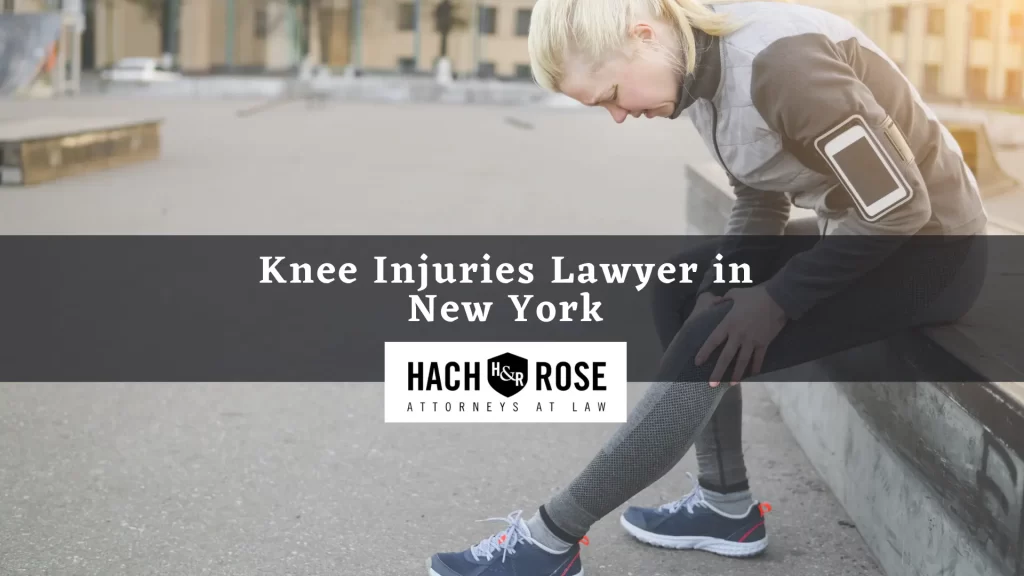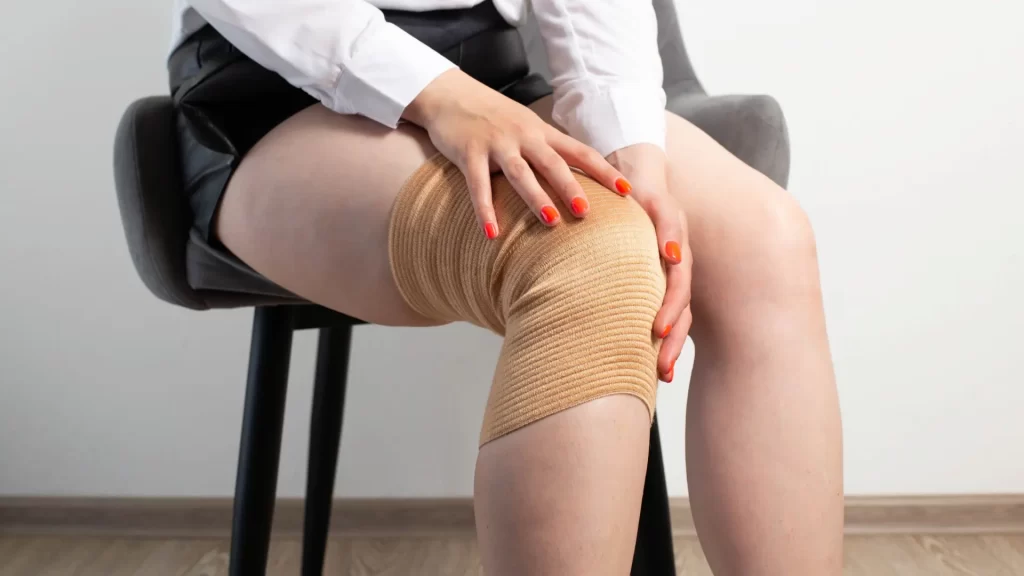
By John Blyth
Knee injuries, while common, can be extremely painful and may interfere with a sufferer’s ability to enjoy normal, everyday activities. There are many types of knee injuries, as well as a variety of causes and treatments. Knee injuries may be caused by a fall, motor vehicle accident, repetitive stress on the knee, or overuse. Knee injuries are characterized by pain, swelling, heat, redness, tenderness, a clicking or popping sound, difficulty bending the knee, problems bearing weight, locking the knee, bruising, and instability while standing.
Physicians will typically identify which specific knee problem a patient possesses by identifying the possible cause of the injury by examining the patient’s physical activity and accident history. For example, if a marathoner complains of knee pain, the patient is most likely suffering from overuse and repetitive stress and may be diagnosed with patellofemoral pain syndrome, or “runner’s knee.” Additionally, a doctor may order an X-ray, MRI, or CT scan to identify the location of the injury within the knee. Knee injuries include sprain, strain, bursitis, meniscus tears, knee joint dislocation, and knee fractures.
Knee Sprains
A knee sprain occurs when ligament fibers are stretched or torn. Ligaments hold the knee together; they stabilize the knee in movements from front to back and from side to side. There are four different ligaments: the anterior cruciate ligament, posterior cruciate ligament, medial cruciate ligament, and lateral cruciate ligament (ACL, PCL, MCL, and LCL). A sprain is graded by the severity of the stretch/tear to the ligament fibers. A patient diagnosed with a grade one sprain is experiencing pain due to a stretched ligament; however, the fibers are not torn, and the patient is not feeling any instability.
A grade two sprain is characterized by partially torn ligament fibers and mild instability. A grade three sprain—the most severe—occurs when a patient experiences severe instability and ligament fibers are torn completely. Knee sprains are often caused by unexpected, unnatural knee movements, such as sudden twisting, changing direction quickly while running, jumping, landing, or a blow to the knee.
Hyperflexion or hyperextension (when the knee is forced out of its normal range of motion) will typically cause a knee strain. Hyperflexion and hyperextension can occur during sports or high-impact incidents, like a motor vehicle accident, when muscles surrounding the knee, like the patellar tendon, are stretched, causing a strain. This strain leads to pain outside of the knee joint and can cause dysfunction of the normal range of motion of the knee.
Knee Bursitis
Knee bursitis occurs when a bursa, a fluid-filled pouch within the knee, is irritated, inflamed, or infected. Bursas act as a shock absorber and reduce friction between muscles and tendons around the joints. There are two main bursas in the knee. Knee bursitis may occur as a side effect of arthritis, a result of a blow to the knee, frequent and sustained pressure, or a bacterial infection of the bursa.
Meniscus tears
Meniscus tears occur when the interior of the knee is damaged. Medial and lateral menisci are pieces of smooth cartilage that, like the bursas, act as shock absorbers. They provide a cushion for the femur (thigh bone) and can be injured acutely during an accident or simply because of aging and overuse.
Dislocation
Knee joint dislocation occurs due to a high-impact, large-force injury, such as a car accident. This is a rare type of knee injury, but it has the ability to cause traumatic damage to every part of the knee, including blood vessels and nerves. This kind of knee injury requires immediate emergency surgery. Sometimes, the patella (or kneecap) can become dislocated; however, this is much less severe than a knee joint dislocation. The patella can be popped back into place and treated with a splint and/or physical therapy.
Direct blows to the bones of the knee cause knee fractures. The patella may crack when a person suffers a severe fall, landing directly on the knee. In this case, the patella may crack due to the force of the fall.
Treatment Options
 If you are experiencing knee pain after an accident or fall, many treatment options are available. A medical professional can help you identify the best course of treatment for your particular situation. Treatments depend on which part of the knee is damaged and how severe the damage is. If a patient suffers from a simple sprain or strain, most physicians will avoid long-term, expensive treatment and instead advise that the patient rest the knee, place ice on it, compress, and elevate the knee above the heart (R.I.C.E.). There are also a variety of over-the-counter anti-inflammatories available for patients suffering from acute knee injuries. If the knee injury is more severe, a doctor may advise knee immobilization in the form of a splint.
If you are experiencing knee pain after an accident or fall, many treatment options are available. A medical professional can help you identify the best course of treatment for your particular situation. Treatments depend on which part of the knee is damaged and how severe the damage is. If a patient suffers from a simple sprain or strain, most physicians will avoid long-term, expensive treatment and instead advise that the patient rest the knee, place ice on it, compress, and elevate the knee above the heart (R.I.C.E.). There are also a variety of over-the-counter anti-inflammatories available for patients suffering from acute knee injuries. If the knee injury is more severe, a doctor may advise knee immobilization in the form of a splint.
Chronic knee injuries involving inflammation and bursitis may require cortisone shots. Cortisone is an extremely powerful steroid with strong anti-inflammatory effects, which can help ease the pain caused by a knee injury. Surgery, typically the last resort, may be necessary for torn ligaments, extensive damage to the menisci, or some fractures and dislocations of the knee. Motor vehicle accidents or any high-impact injury may necessitate emergency knee surgery. Voluntary knee replacement surgery may occur when knee pain impedes daily life. This knee pain may be caused by a lifetime of repetitive motion and stress on the knee.
Non-emergency surgeries
Most non-emergency surgeries are done arthroscopically. This is a procedure in which a camera is used, and small punctures are made in the knee to insert surgical instruments. This way, repairs can be made inside the knee without actually having to open the knee with a large incision.
Most knee pain patients will be advised to visit a physical therapist. Post-operative patients visit the physical therapist and patients for whom surgery is not an option. A physical therapist will lead a patient through various exercises designed to strengthen and stretch the muscles surrounding the knee. This will allow the patient to exercise strengthened leg and knee movement to help prevent further injury.
Sports injuries
Occasionally, a knee injury is sports-induced. In other cases, a knee injury is caused by a fall, motor vehicle accident, or stress/overuse. In these cases, an outside party may be at fault for the injury. A case involving a knee injury may also involve other injuries, such as injuries to the femur, tibia, and fibula (upper leg and lower leg).
Call Our Personal Injury Attorneys
At Hach & Rose, LLP, we have experience determining liability for knee injuries and obtaining compensation for our injured clients. Previously, we have obtained a jury verdict of over 6 million dollars for a woman who suffered a knee injury while working, a settlement of $500,000 for a woman who was injured in a shopping mall, and many other successful results for clients who have suffered knee injuries. If you suffer a knee injury due to an accident, contact the knowledgeable personal injury attorneys at Hach & Rose, LLP at (212) 779-0057 for a free consultation.
